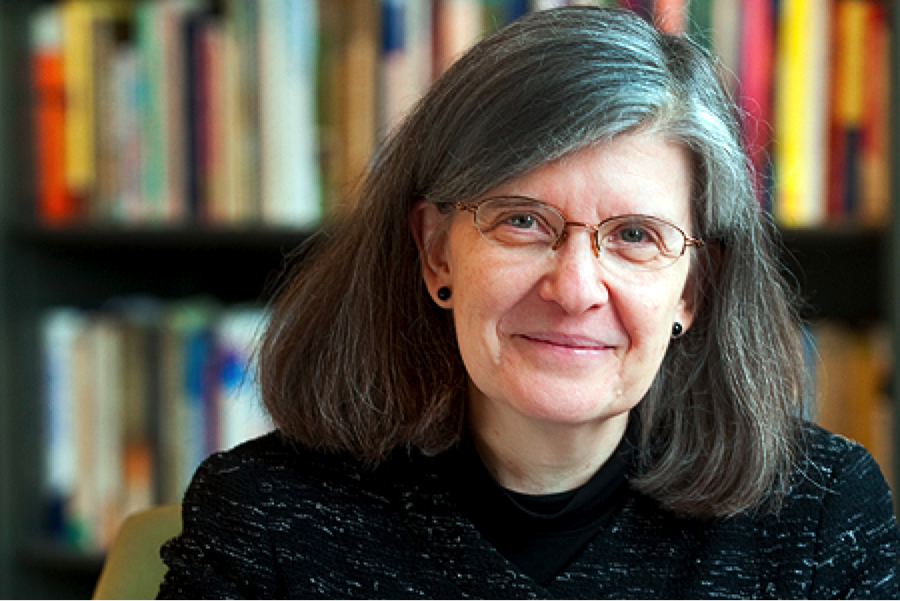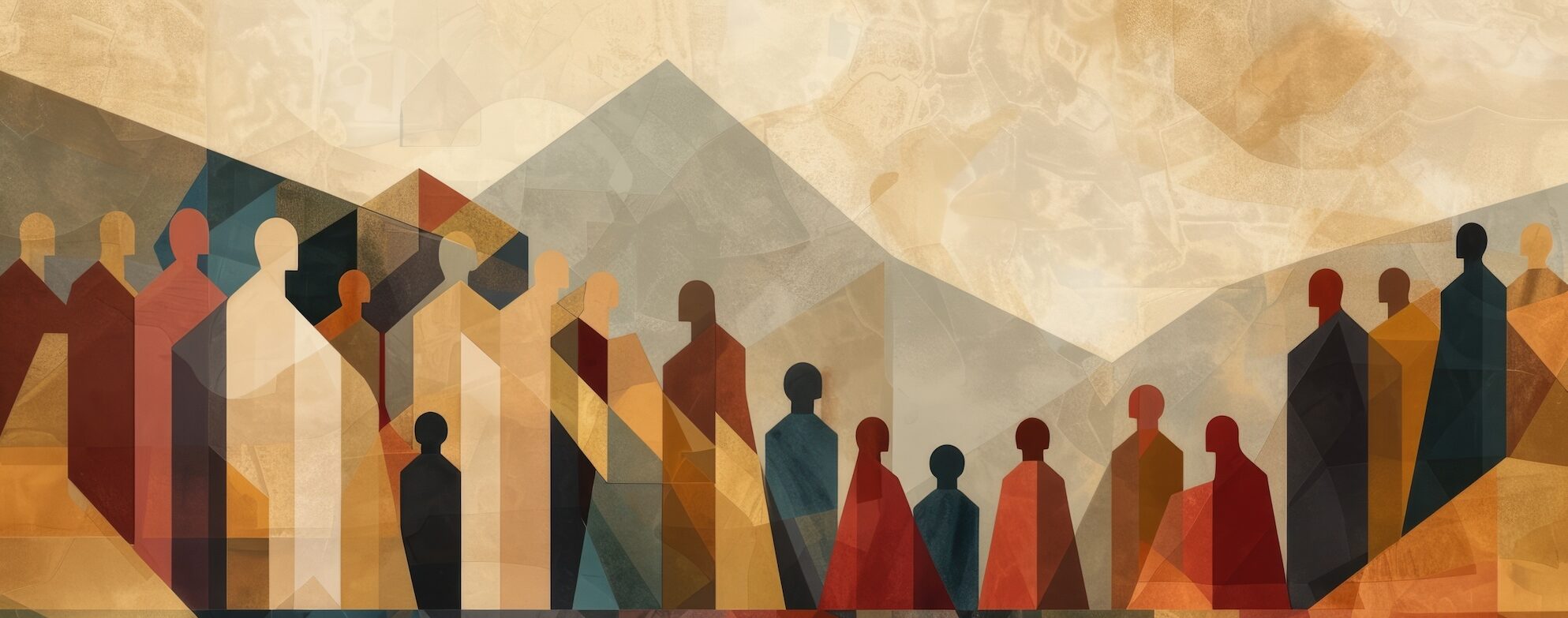An interview with a scholar of Cascadian spirituality and religion (Part One)
Patricia O’Connell Killen is the primary editor of the book Religion and Public Life in the Pacific Northwest. Professor Killen has worked regularly with Northwest pastors, congregations, and community organizations on understanding the religious ecology of the region and how it shapes both individual and institutional religious sensibilities and possibilities. She is a nationally recognized scholar in American religious history and is currently serving Gonzaga University as its Academic Vice President. She was kind enough to sit down with Christ & Cascadia‘s editor Matthew Kaemingk for an interview about her findings.
Kaemingk: Reflecting on your research could you explain how the Pacific Northwest compares to the rest of the United States in terms of religious affiliation statistics?
Killen: Three things stood out about religious affiliation numbers in the Pacific Northwest.
First, most Northwesterners are outside the doors of the church, synagogue, temple, or mosque, and always has been. In 2000, the figure was 62.8%. A smaller percentage of the Pacific Northwest is “churched” that is, counted as adherents, than in any other region of the country. Adherents comprised 37.2% of the total population in 2000. That compares to a national figure of 59.5%.
Second, those who are in religious organizations are divided and dispersed amongst more different religious bodies than is the case in other regions of the U.S. The top five religious bodies in other parts of the U.S. capture 75% to 80% of the adherents. Hence these top five groups dominate the “religious marketplace.”
In the Pacific Northwest, however, the top five groups capture only 66% of adherents. Because the total “pie” of adherents is so small in the Northwest, it makes it difficult for any single denomination to exert significant social or political influence. For example, Roman Catholics, the largest group in the region, accounted for only 11.3% of the population in 2000.
The third fact that stood out from the 2000 data was the unique make up of the top religious communities in the Pacific Northwest. The list is strikingly different from the national pattern.
The top six religious communities nationally, in descending order were: Catholic, Baptist, Historically African-American Protestant, United Methodist, Other Conservative Christian, and Holiness/Wesleyan/Pentecostal.
But in the Pacific Northwest the top six were: Catholic, Holiness/Wesleyan/Pentecostal, Other Conservative Christian, LDS, Baptist, and Lutheran (ELCA).
Kaemingk: You describe the Pacific Northwest as an “open” religious environment, could you tell us what you mean by this?
Killen: “Open” captures a fact and its implications.
The Pacific Northwest lacks a dominant religious community alongside or over against which individuals and communities construct their religious identities. In much of the South you are Baptist or working at not being a Baptist. In Minnesota over 50% of the population, when this book was written, were Lutheran or Catholic. In the Pacific Northwest the single largest religious body is the Roman Catholic Church, which is only 11.3% of the population. That is a significantly smaller percentage than the 25% who responded “none” when asked, “What is your religious affiliation, if any?”
In an “open” religious environment like the Pacific Northwest there is less social pressure and social reinforcement for participation in religious organizations. Individuals must repeatedly choose to belong and participate. This creates space for innovation in religious ideas, practices, and modes of organization. An “open” space feeds religious creativity; it also feeds anxiety about boundaries of individual and group identity.
In an “open” religious environment, faith communities are most effective in bringing their moral commitments to the table of civic and political discourse when they build alliances. They must also learn to translate their proposals into language about the broader welfare of the community and positive impact that will result from this alliance.
Historically this is what has been required in the region for religious bodies to be effective, whether it involved defeating a measure to close all faith-based schools in Washington in the 1920s, promoting a minimum wage law in Oregon in the early 20th century, regulating the sale of alcohol or regulating gambling in Washington in the 1950s. It is what was involved in the efforts to block and then repeal assisted suicide legislation in the 1990’s.
An “open” religious environment renders less clear to individuals the value of religious participation in connection to participation in other organizations and activities.
To illustrate, in conversing with religious educators new to the Pacific Northwest, I have listened to the frustration of those who, assigned to provide youth religious education, deal with parents who want the classes scheduled around their children’s other activities, be it dance, music, or sports.
Kaemingk: Who are these religious “nones” in the Pacific Northwest? What seems to be their attitude toward spirituality and the church?
Killen: The term, “nones,” refers to those who, when asked as part of the American Religious Identification Survey, “What is your religious identity, if any?” responded “none.”
The 2000 data showed “nones” to make 25% of the Pacific Northwest. That is twice the percentage of the next largest group (Roman Catholicism) and more than five times the size of the second largest religious family the Holiness/Wesleyan/Pentecostal communities.
When we did the book, Northwest “nones” were mostly white, male, educated, and owned their homes. They were conventional in believing in God, believing that God intervenes in their lives, even in praying. Very few “nones,” self identify as atheist or agnostic, less than 2%.
Where Northwest “nones” were unconventional was in their thinking about organized religious bodies – “nones” do not consider religious institutions important to their spiritual/religious journeys. “Nones” are indifferent or averse to institutional religious participation.
In many ways the “nones” about whom we wrote were the extreme example that disclosed broader, deeper trends in the religious life of the U.S. The growing disconnection from religious institutions and historic faith traditions that they represent, reflects a parallel disaffection from political, civic, economic and institutional organizations that had structured much of social and cultural life in the U.S. until the 1970s.
Given this historic process, it can be helpful to think about “nones” as representing a mode of religiousness more aligned with a late-modern/post-modern social, economic, cultural, political context.
Kaemingk: The theme of individualism appears frequently in your descriptions of Northwest religion and spirituality. What does this individualism look like?
Killen: The claim I would make is that in the Pacific Northwest religious identity and belonging are the life-long project of an individual.
Individuals in this region must repeatedly choose to participate in a religious body. Individuals make that choice, opting for religious participation in relation to many other activities and opportunities that could occupy their time.
A deep backdrop to that choice is the reality that most of the population of the Pacific Northwest has come here from elsewhere. Moving requires the severing of one set of social ties and creates the option of building new ties, or not. Building new social connections is not always easy to do. With weak social relationships an individual finds her or himself alone in many ways. The region alternately promises endless opportunity and odds of crushing failure.
This region exhibits a tentative quality in relation to commitment, a slowness to build durable social relationships, in part because of a fundamental dislocation that goes with migration. And today, with communication technology making it possible to remain connected around the world, relationship to a region becomes even more complicated.
So, I would summarize the individualism as a combination of hope and fear; a longing for community in tension with a sense that in the region one must be utterly self-reliant; a concern that if one commits to a religious body it will be enervating and not energizing. This is especially the case for in-migrants to the region from other parts of the U.S. This individualism is tempered for individuals by bonds of ethnic and familial connection.
Part two of this interview with Dr. Patricia O’Connell Killen will be published next week.


